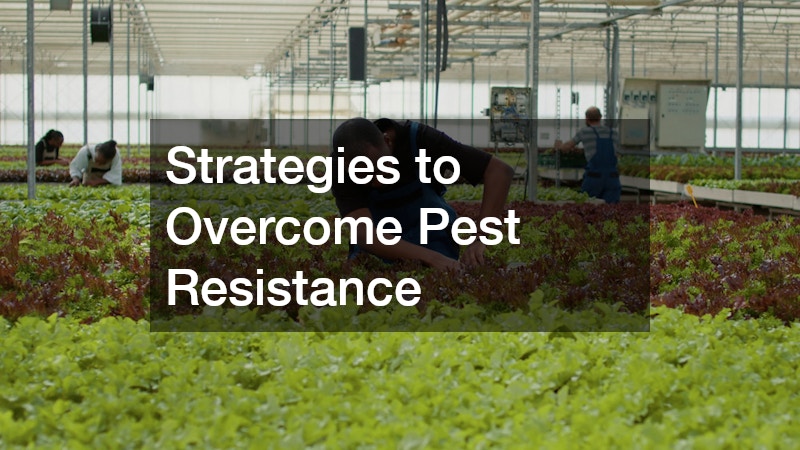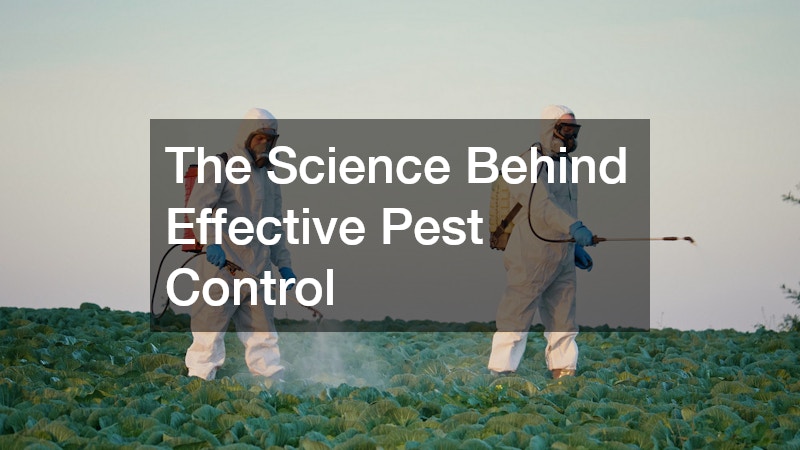Pest control is a critical aspect of agriculture and urban management, aiming to minimize damage and health risks presented by various pest species. Understanding the science behind this process is crucial, as it enables more effective and sustainable management and prevention strategies. Scientific insights guide us in employing methods that are not only effective but also environmentally conscious and economically viable.
The Most Effective Methods of Pest Control
Biological Control Methods
Biological control methods leverage natural predators, parasites, and pathogens to manage pest populations in an ecosystem-friendly manner. Predators like ladybugs and spiders are often introduced to control aphid or mite populations, reducing the need for chemical intervention. Pathogens, including certain bacteria and fungi, can also be deployed to infect and kill pests without affecting non-target species.
The use of biological control has been increasingly favored as it poses fewer risks to human health and biodiversity compared to chemical means. However, the introduction of non-native species requires careful consideration to avoid unintended ecological consequences. Moreover, making biological controls effective necessitates a comprehensive understanding of the ecosystem and pest ecology involved.
It is essential to manage biological control initiatives in tandem with other methods to ensure their success. Integrated Pest Management (IPM) often utilizes these natural solutions alongside other approaches to create a framework that is both effective and sustainable. As with any method in pest control, continuous research and development are crucial to optimize biological controls and expand their applicability.
Chemical Control Methods
Chemical control is one of the most traditional pest management methods, employing pesticides to manage pest populations. The development of pesticides involves sophisticated chemistry to target specific pests while minimizing harm to non-target species and the environment. Despite their usefulness, reliance on chemical pesticides can lead to problems such as pest resistance and ecological disruption.
Newer generations of pesticides are more targeted and effective, reducing the ecological footprint compared to older, broad-spectrum chemicals. Diagnostic tools and application technologies have evolved to enhance the precision of chemical control methods. This shift aligns with a growing emphasis on reducing pesticide use while maintaining agricultural productivity.
It’s important to judiciously use pesticides within a framework like IPM to mitigate the risks associated with chemical controls. The combination of chemical and non-chemical methods often yields the best results in pest management. Scientific advancements in this area continue to provide better outcomes with fewer adverse effects.
How Integrated Pest Management (IPM) Works
IPM Principles and Strategies
Integrated Pest Management (IPM) is a holistic approach that incorporates multiple pest control methods. It prioritizes the least environmentally and economically disruptive strategies, scaling up to more intensive methods only when necessary. IPM involves careful analysis and monitoring to understand pest dynamics and predict outbreaks.
Among the core principles of IPM are prevention, observation, and the implementation of a combination of control tactics. These tactics can include cultural, mechanical, biological, and chemical methods tailored to the specific pest and environment. Preventive measures such as crop rotation and proper sanitation play a vital role in minimizing pest opportunities.
Benefits of IPM
The advantages of Integrated Pest Management are manifold, extending across environmental, economic, and health domains. Environmentally, IPM reduces the negative impacts associated with pesticide use, helping maintain biodiversity and ecosystem health. By mitigating chemical inputs, it provides a safer habitat for non-target organisms, including humans.
Economically, IPM can lead to cost savings through the efficient use of resources and reduced reliance on expensive chemical treatments. Pest management that lowers crop losses and enhances yield quality can improve profitability for farmers. Additionally, IPM strategies can open markets to organic produce, creating opportunities for income diversification.
How Evolving Pest Resistance is Managed
Mechanisms of Pest Resistance
Pest resistance develops when species adapt to control measures, rendering them less effective. This phenomenon is primarily driven by genetic mutations that confer survival advantages upon exposure to chemical or biological controls. Over time, selective pressure results in a population shift where resistant individuals dominate.
Understanding the mechanisms of resistance is crucial for developing strategies to mitigate its impact. Resistance can occur through various means, such as metabolic detoxification, target site alteration, or behavioral changes in pests. Recognizing these mechanisms allows researchers to anticipate resistance trends and adjust management plans accordingly.
Strategies to Overcome Pest Resistance
Effective management of pest resistance requires ongoing innovation and adaptation in pest control strategies. Rotating different classes of pesticides can reduce selection pressure and slow resistance development. Employing synergistic control methods, such as combining biological and chemical tactics, can enhance control measures and mitigate resistance.
An important strategy is the use of refuges—areas where no control methods are applied to maintain a population of susceptible pests. This allows susceptible traits to persist in the population’s gene pool, reducing the rate of resistance buildup. Additionally, investing in research and developing targeted biotechnological solutions can support sustainable pest management endeavors.
The science behind effective pest control provides essential insights for developing sustainable and resilient management strategies. By understanding and applying biological, chemical, and integrated pest management approaches, we can achieve a balance between pest control effectiveness and environmental stewardship. Embracing a science-based approach to pest management ensures the longevity of agricultural productivity and the health of ecosystems, highlighting its importance for present and future generations.

